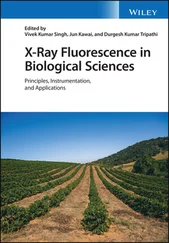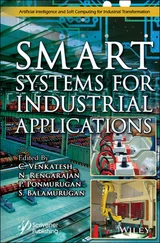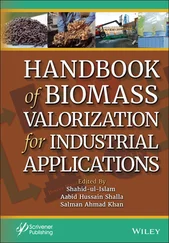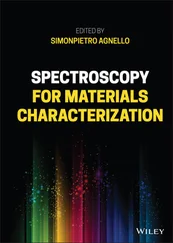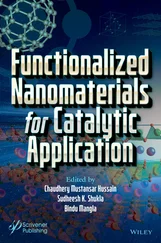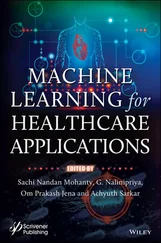A further important influence on the development of XRF analysis was the availability of various X-ray optics. First, there were multilayer systems with large lattice constants for the detection of light elements in WD spectrometry. Increasingly, however, optics was used for beam shaping and influencing the properties of the primary radiation. The performance and application range of EDSs therefore could be continuously improved, for example, by the excitation of very small sample areas with high intensity or by reducing the scattering of the exciting radiation to improve the sensitivity.
All these assemblies are now used in modern X-ray spectrometers. A more detailed description and compilation of the most important instrument classes is given in Section 4.3.
2.4 Carrying Out an Analysis
2.4.1 Analysis Method
In order to carry out an analysis various steps have to be taken starting with asking the right analytical questions – this applies not only to X-ray spectrometry.
In the following discussions, unless otherwise stated, it is assumed that the sampling has already taken place and the material to be analyzed is available; this means that sampling here is not a part of the analysis. The sample material available in the laboratory is called laboratory sample (see DIN-51418-1 2008, Part 2, DIN-51418-2 2014).
For carrying out an analysis it is required to determine the analytical strategy and the analytical method to be used. It is based on the material to be analyzed as well as the analytical task requested, specifically the definition of the elements to be analyzed, the estimation of the concentration range to be detected, and the desired uncertainties. Of course, one must take into account the available equipment and the required time. Therefore the following steps are necessary:
Determination of the type of sample preparation, namely, manufacturing of the measurement specimen from the laboratory sample, taking into account the analytical taskthe parameters that have to be determined with the analysisthe time available for the entire analysis, including preparation, measurement, and data evaluationthe required analytical accuracy
Definition of analysis conditions (e.g. excitation parameters and measurement time) and of the quantification model to be used
Carrying out the measurements on the sample as well as, if necessary, on reference or monitor samples
Qualitative and quantitative evaluation of results
Estimation of measurement uncertainties
Preparation of a report of the analytical results
In the case of unknown samples and high accuracy requirements this process can take up a considerable amount of time; in the case of repetitive measurements on known sample material it is possible to obtain an analysis result in a very short time even with low measurement uncertainties.
The individual steps can be summarized as follows:
The actual measurement includes the determination of the test conditions as well as the measurement of the test sample itself and, if necessary, of the calibration samples with the available analytical technique. Figure 2.11 Steps for an analytical procedure.
The analytical method includes the measurement, sample preparation, and evaluation of the measured data. The analytical method can be used in an identical way for comparable analytical questions.
The analytical procedure includes additionally the sampling procedure and the data processing, namely, the preparation of the analysis report including a possible statistical evaluation of the results.
This situation is demonstrated in Figure 2.11.
The individual steps of an analytical method and their influence on the analysis results are discussed in more detail in the following sections. In addition to the various possibilities of sample preparation, the influence of the analytical technique must be discussed as well. In both cases, the analytical problem itself, as well as the analytical accuracy that is required, has a great influence on their selection.
When performing the measurement itself, the selection of the optimal measuring conditions as well as the processing and evaluation of the spectra, including quantification, is important. Finally, the estimation of the analysis errors and the uncertainties is an important part of an analysis procedure in order to assess the quality of the results. These considerations essentially depend on the respective analytical task.
2.4.2 Sequence of an Analysis
The first step in an analysis is to define its goal. Several separate problems have to be considered.
2.4.2.1 Quality of the Sample Material
The laboratory sample, i.e. the sample material that is available in the laboratory, can have different forms: it can be compact, it can be small-particle size granule or powder-like, or it can be a paste or even a liquid. Increasingly, finished products have to be analyzed for quality assurance or fault identification purposes. As far as possible, they should not be modified for the analysis. Knowing the sample material, important information about the sample matrix can be obtained for the evaluation, such as information about non-measurable light elements.
2.4.2.2 Sample Preparation
For the various material qualities, the possibility of different sample preparation techniques is required. They also depend on the type of the spectrometer as well as on the desired analytical accuracy.
The simplest method of sample preparation is to cut the laboratory sample into a shape appropriate for the spectrometer. Nonetheless, it may also be necessary to homogenize, compress, or clean the sample surface so that the analyzed sample volume represents the material to be characterized. In special cases, it can be advantageous to change the state of the sample by dissolution, digestion, or deposition to achieve better analytical results.
These options are discussed in detail in Chapter 3.
Analytical tasks for element analyses can vary broadly. They can be
a simple determination of the elements present in the laboratory sample (qualitative analysis);
a monitoring of the content of one or more elements with respect to a predetermined threshold value (semiquantitative analysis);
a comparison of the measured intensities of one or several elements with those of reference samples for identifying a material class (positive material identification – PMI);
the quantitative determination of the mass fractions of some or all elements in the sample material with a predetermined uncertainty level as an overview analysis, as well as for an accurate or even highly accurate analysis (quantitative analysis);
the characterization of layer systems on the sample with respect to layer thickness and layer composition, again with different accuracy requirements;
the determination of element distributions in inhomogeneous samples.
Starting from these very different objectives, the individual steps for the analytical method are to be defined, such as the selection of
the equipment to be used for the measurement
the reference samples to be used to calibrate the method
the selection of appropriate measuring conditions as well as
the procedures for data processing and evaluation.
2.4.2.4 Measurement and Evaluation of the Measurement Data
In accordance with these definitions, the measurements shall be carried out both on the unknown sample and, if necessary, on reference samples with the selected measuring conditions.
Thereafter, a processing of the raw data is required, i.e. the measured intensities must be corrected for overlap with other lines, for detector artifacts as well as for the spectral background. The resulting net intensities can then be converted into mass fractions or layer thicknesses using appropriate quantification models. By comparison with reference samples, the analytical result can be improved, or the measurement uncertainty can be reduced.
Читать дальше



